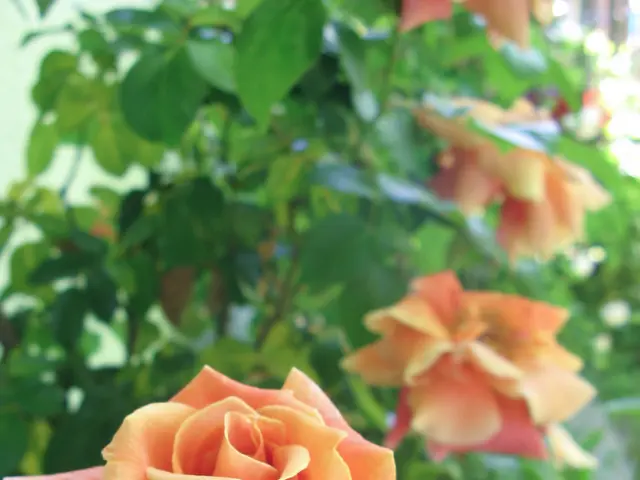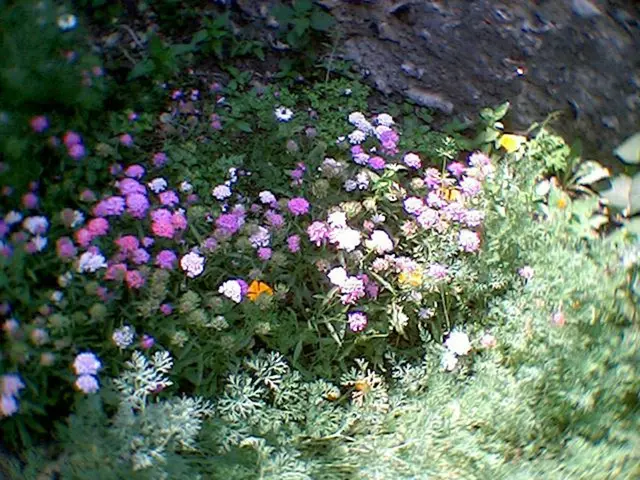Enhancing Peach Tree Fruiting: Ideal Fertilization Timing for Maximum Yield
All right, let's get our hands dirty with some gardening tips, y'all! Our resident green thumb, Glen, is here to shares some insights on fertilizing peach trees for that perfect peachy harvest.
Glen's Gardening GuruGlen, our gardening guru, has over a decade of practical experience, so you know you're in good hands. He's not shy about sharing his knowledge on this blog, recently posting about candy cane peppers, watermelons, and even fungicides to keep your plants diseased-free!
Refresher on Peach Tree FertilizationEver thought about feeding your peach tree? It's crucial for those sweet, juicy peaches! Feed 'em in early spring and again in early summer to give 'em a boost, just like you'd give yourself a good meal at the right times. And remember, don't pile it up near the trunk; instead, prepare the soil and spread the fertilizer evenly in a circle around the tree. This keeps the nutrients at the root zone, encouraging healthy absorption.
Bringing Science into the MixBut what's the science behind it, you ask? Here's the lowdown:
- Soil Test: Conduct a soil test to get an idea of its pH and nutrient levels. Peach trees like slightly acidic soil (pH 6.0-6.5). This simple test can help guide effective amendments to ensure your soil is perfect for your peach tree.
- Macro and Micro Nutrients: Peach trees need a balance of macronutrients (N, P, K) and micronutrients (Ca, Mg, S, Fe, Zn). These essential elements help create a healthy, productive peach tree.
- Choose Your Fertilizer: You can opt for organic or synthetic fertilizers. Organic ones work great for improving soil structure and providing slow-release nutrients, while synthetic fertilizers offer immediate nutrient availability. For young peach trees, a balanced fertilizer (10-10-10) is an excellent choice for promoting healthy growth. Older trees might require a higher nitrogen content in early spring to boost growth and a balanced ratio in early summer for fruit size.
Caring for Peach Trees at Different StagesLet's talk about different stages in a peach tree's life—from nurturing young trees to maintaining mature ones.
- Young Trees: Preparing the soil is crucial. Make sure the soil pH falls between 6.0 to 6.5. You can test and adjust the pH using lime or sulfur. Young trees need about 1/2 cup of balanced fertilizer (10-10-10). Be gentle with fertilizing young trees to avoid nutrient burn. Regular waterings, monthly prunings, and removing dead or diseased wood keep the young tree strong and healthy.
- Mature Trees: Mature trees need consistent care to produce high-quality fruit. Fertilize twice a year, starting with a balanced fertilizer in early spring, and a fruit-boosting fertilizer in early summer. A mature tree may require 5 pounds of fertilizer per application. Monitor signs of nutrient deficiencies, such as yellow leaves, and make adjustments as necessary. Regular pruning helps maintain airflow, reduces disease risk, and encourages strong fruit production.
Glen's gardening knowledge spans beyond peach tree fertilization, extending to various home-and-garden topics like candy cane peppers and fungicides. In his latest blog post, he explores the essential aspect of home-and-garden lifestyle, peach tree care, listing practical tips on soil testing, macronutrient, and micronutrient balance, choosing fertilizers, and providing specific guidelines for young and mature trees to ensure a healthy lifestyle for home-and-garden enthusiasts' peach trees.








